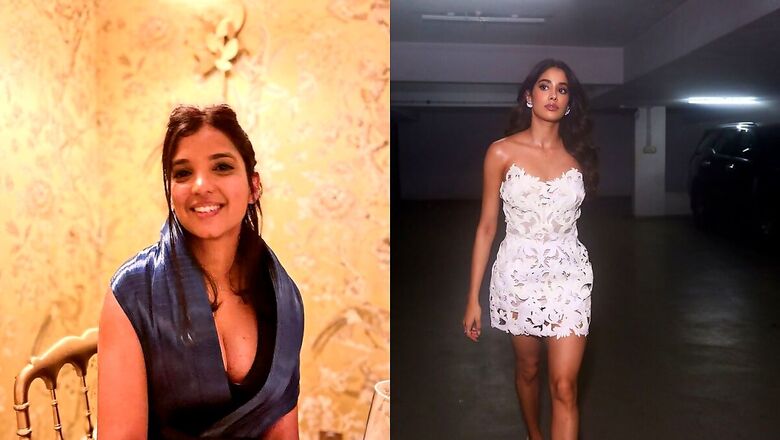
views
Rimzim Dadu, a visionary in the fashion industry, has consistently pushed the boundaries of couture with her innovative approach to design. Immersed in the world of textiles from a young age, Dadu honed her craft at Pearl Academy, blending her innate passion with technical expertise. Her label is renowned for its unique fusion of tradition and modernity, exemplified in her latest collection, “Stucco,” which reimagines Baroque opulence through contemporary materials and techniques. Dadu’s work stands as a testament to her commitment to preserving heritage while pioneering new frontiers in fashion.
Question 1. Can you tell us a bit about your journey, your education, and how it all began for you?
Answer: From a young age, I was immersed in the world of textiles, thanks to my father’s work as an exporter. I spent my childhood afternoons at the factory, learning from the artisans and experimenting with materials. This early exposure fueled my passion for design. I pursued my formal education in fashion design from Pearl Academy, which allowed me to blend my innate curiosity with technical skills. The journey has been one of constant exploration, where my fascination with materials and innovative techniques became the cornerstone of my label.
Question 2. Your recent presentation at India Couture Week was a standout. What was the inspiration behind your collection – Stucco, and how did you translate that vision into your designs?
Answer: The inspiration for my collection “Stucco” came from the grandeur of Baroque architecture. I’ve always been captivated by its intricate details and opulent style. My goal was to reinterpret this historical richness through a modern, experimental lens. By using unconventional materials like metallic yarns and steel wires, I was able to recreate the lavish textures and ornate elements of Baroque art, but in a way that feels fresh and contemporary. The collection is a celebration of historical grandeur, reimagined for the present day.
View this post on Instagram
Question 3. Can you share some insights into the techniques or materials you experimented with for this collection?
Answer: For “Stucco,” I experimented with a range of materials and techniques that align with my brand’s ethos of innovation. I used metallic yarns and steel wires to create a sense of opulence that mirrors Baroque interiors. I also incorporated traditional zardozi work, but with a twist—pairing it with modern silhouettes and experimental textiles. The use of these materials allowed me to play with light and shadow, a key feature in Baroque design, while adding a contemporary edge to the pieces.
Question 4. Can you discuss any particular piece from this collection that holds special significance for you and why?
Answer: One piece that stands out to me is a sculpted Baroque cut-out dress made with hundreds of individual Baroque pieces crafted in our signature cords. This dress is significant because it encapsulates the essence of the collection—melding historical inspiration with modern innovation. The intricate detailing and the labor-intensive process of crafting each Baroque piece make it a true representation of what I set out to achieve with “Stucco.”
Question 5. How do you see the future of couture evolving, and what role do you think innovative designers like yourself will play in that evolution?
Answer: I believe the future of couture will be defined by a balance between tradition and innovation. As designers, our role will be to push the boundaries of what couture can be, while still honoring the craftsmanship that is at its core. I see a growing emphasis on material experimentation and the use of technology in couture. Designers like myself, who are willing to explore new techniques and challenge conventions, will be at the forefront of this evolution, redefining couture for the next generation.
Question 6. Your designs often feature a blend of modernity and tradition. How do you ensure that your work remains relevant to both contemporary and traditional audiences?
Answer: The key to staying relevant to both contemporary and traditional audiences lies in finding a harmonious balance between the two. I draw heavily on traditional Indian craftsmanship, but I always aim to present it in a way that resonates with modern sensibilities. By experimenting with materials and techniques that are both rooted in tradition and forward-thinking, I create pieces that speak to a diverse audience. My goal is to ensure that the craftsmanship and heritage are preserved, while also pushing the boundaries of what Indian fashion can be.
Question 7. What advice would you give to emerging designers who are looking to make a mark in the fashion industry?
Answer: My advice to emerging designers is to stay true to your vision and never be afraid to experiment. The fashion industry is incredibly competitive, and it’s easy to get lost in trends. However, what truly sets a designer apart is a unique perspective and the courage to explore uncharted territories. Focus on honing your craft, learning from every experience, and staying resilient in the face of challenges. Innovation and authenticity are what will ultimately help you make a mark in the industry.

















Comments
0 comment